Don’t reinvent the wheel! Write2Learn resources
In this week’s post you’ll find resources for:
Run-ons
V-ing and V-ed clauses (You’ll love them!)
Story grammar for teaching narrative
This week, I wrote a piece for EducationHQ on teacher workload and shared planning materials. Within, I argued that it’s lovely and rewarding to create your own materials from scratch, but that it’s also unsustainable and unnecessary if there is already great stuff that people are willing to share.
Given the pressure we are all under at the moment, there is nothing that gives me more joy than knowing the resources from our school can help support the work of teachers around the country and beyond, by providing high quality, adaptable units that meet the needs of your students.
In today’s post, I feature some resources from our write2Learn materials that help address some key needs in student writing.
NOTE: A massive thank you to the teachers and educators at my school, Brandon Park Primary School for their work on these resources. It is a pleasure to showcase their work!
Run-Ons
How often do you read a student’s piece of writing with sentences that go on forever? They may have punctuation, they might not. There may be endless use of ‘and then’ or ‘but’. Whatever your flavour of run-on, this habit is a pernicious problem in student writing. Check out this brief set of units for Grades 3-4 but applicable elsewhere as needed. Within it, you’ll find a step-by-step process for keying student attention into what run-ons are and provide structured practice to remove them from samples of writing.
Following the progression through this series of lessons, almost all run-ons have evaporated from our writing samples, and when they rear their ugly heads, it only takes a quick comment asking “Is this a run-on, do you think?” and students can swiftly fix them up.
Revising and editing is a key part of the writing process, but if students are constantly producing passages of unpunctuated text, it can be a hard task to fix it. We hope this set of lessons will assist your students to command their sentences more deftly.
Run-On RESOURCES IN SUBSCRIBER DOWNLOADS
Y3 Run-on sentences 4 lessons SLIDES
Y3 Run-on sentences 4 lessons IND. TASK
Y4 Run-Ons - 3 lessons SLIDES
Y4 Run-Ons - 3 lessons IND. TASK


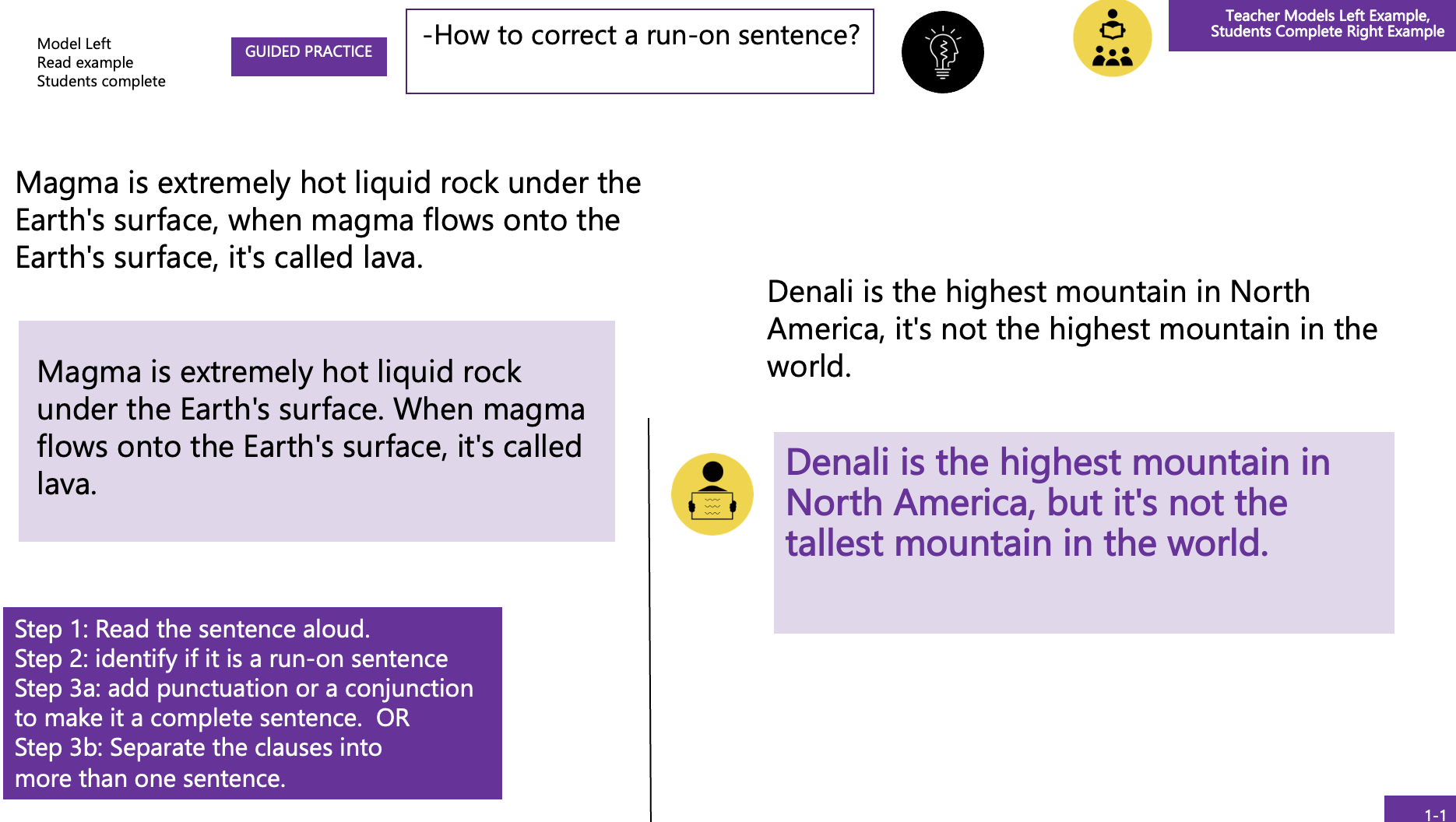
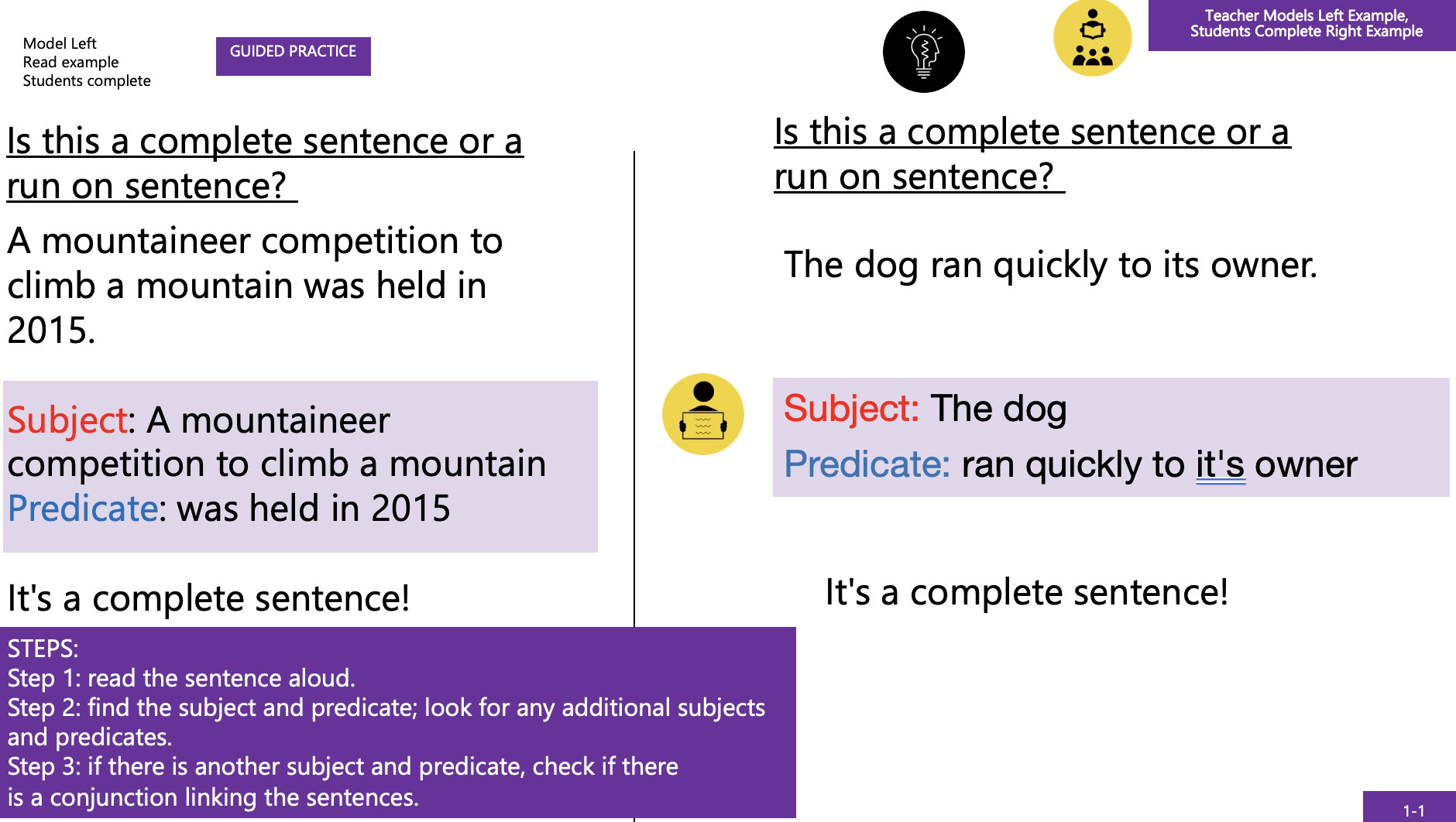
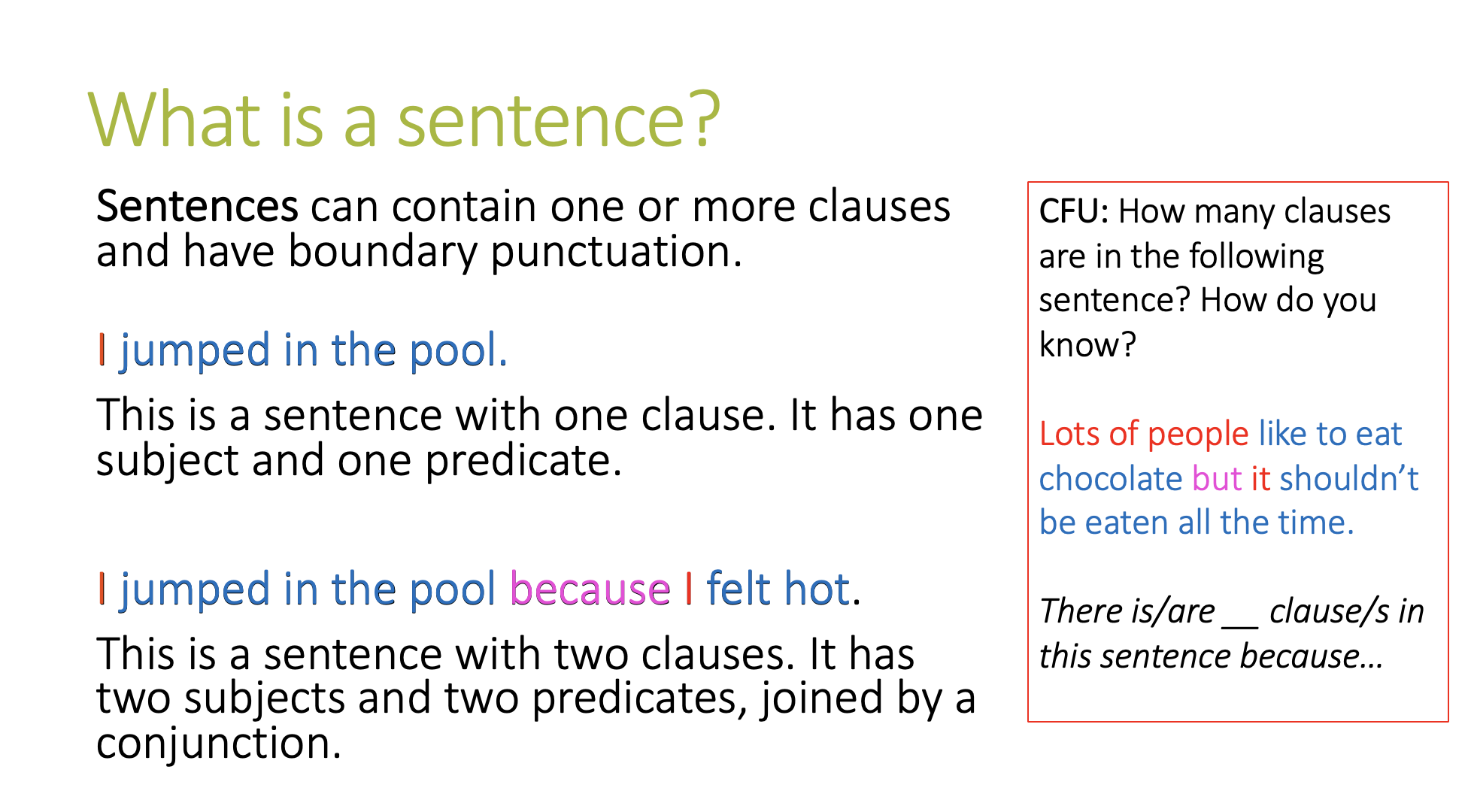

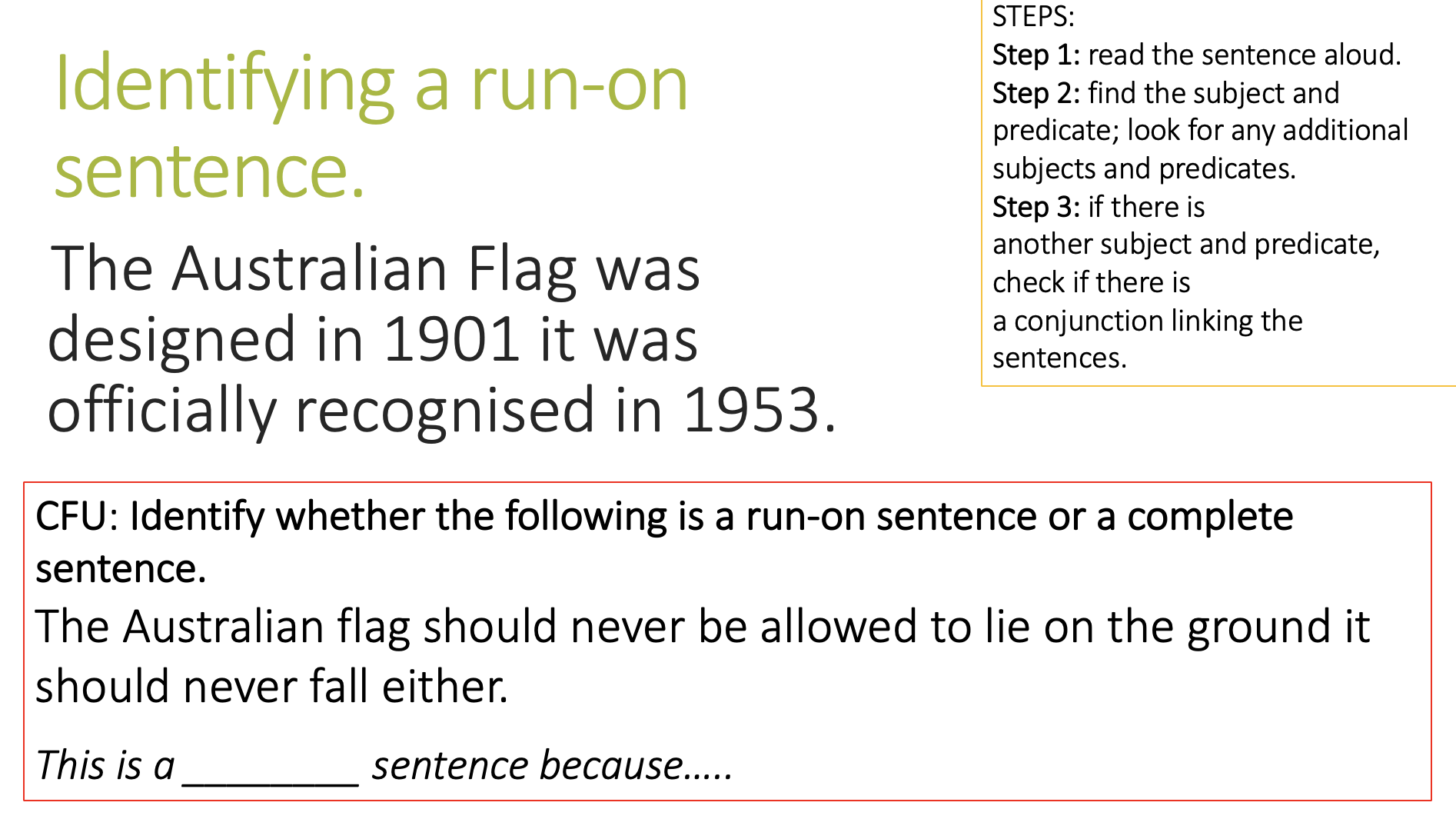
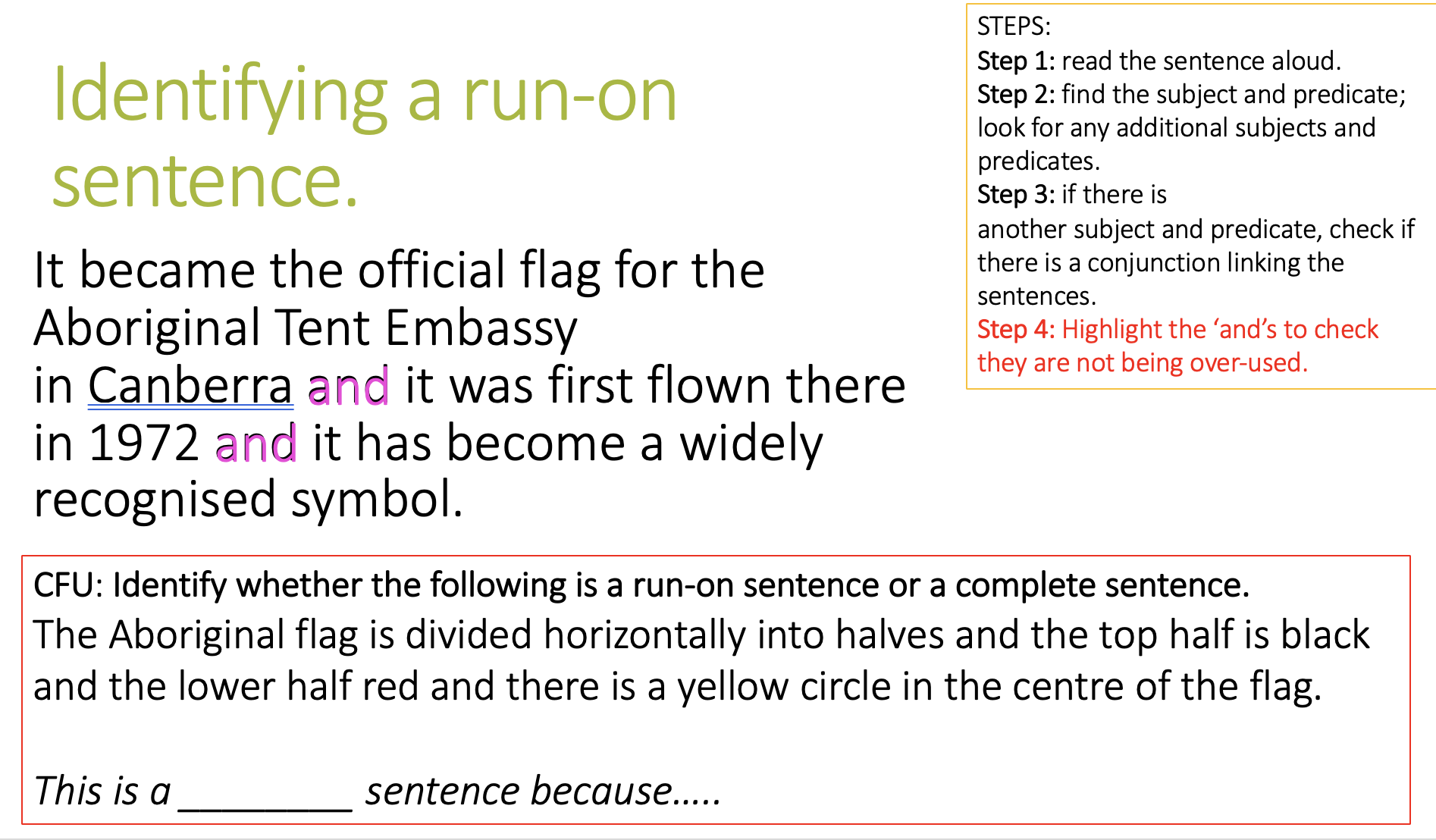
V-ing and v-ed clauses
Grab any slightly poetic description in a text and I wager you it will feature V-ing or V-ed clauses (sometimes called participle clauses). These handy constructions allow students to embed more description or character intentions/actions/feelings without having to use a conjunction or start a new sentence.
Check out these examples of V-ing clauses:
Harry could hear the drone of hundreds of voices from a doorway to the right – the rest of the school must already be here – but Professor McGonagall showed the first-years into a small empty chamber off the hall. They crowded in, standing rather closer together than they would usually have done, peering about nervously.
…
About twenty ghosts had just streamed through the back wall. Pearly-white and slightly transparent, they glided across the room talking to each other and hardly glancing at the first-years.
- From Harry Potter and the Philosopher’s Stone by J.K. Rowling
Check out these examples of V-ed clauses:
Punctuation is also taught, embedded within the other strategies.
- From my first write2Learn blog post
Spooked and frightened, he left the haunted house.
V-ing = The verb in its present progressive form (eg. embarrassing). Clauses that begin with this form allow students to add a subordinate clause expanding on something the subject is thinking or feeling or doing.
V-ed = The verb in its past tense form (eg. embarrassed). When you start a clause with V-ed, it can add something that just happened or is happening simultaneously without any conjunction.
The best thing about these constructions is that they elegantly add further detail and illustration without any need for conjunctions or starting new sentences.
Our students absolutely love this unit on V-ing and V-ed clauses which we have repeated in years 3 - 6. It is not a feature of the The Writing Revolution but we have all grown very attached to this way of teaching our students to be more descriptive and even poetic in their writing. It’s particularly useful in narrative and imaginative pieces, but is also a feature of information and persuasive genres as well. Grab out a newspaper article and see if you can find some!
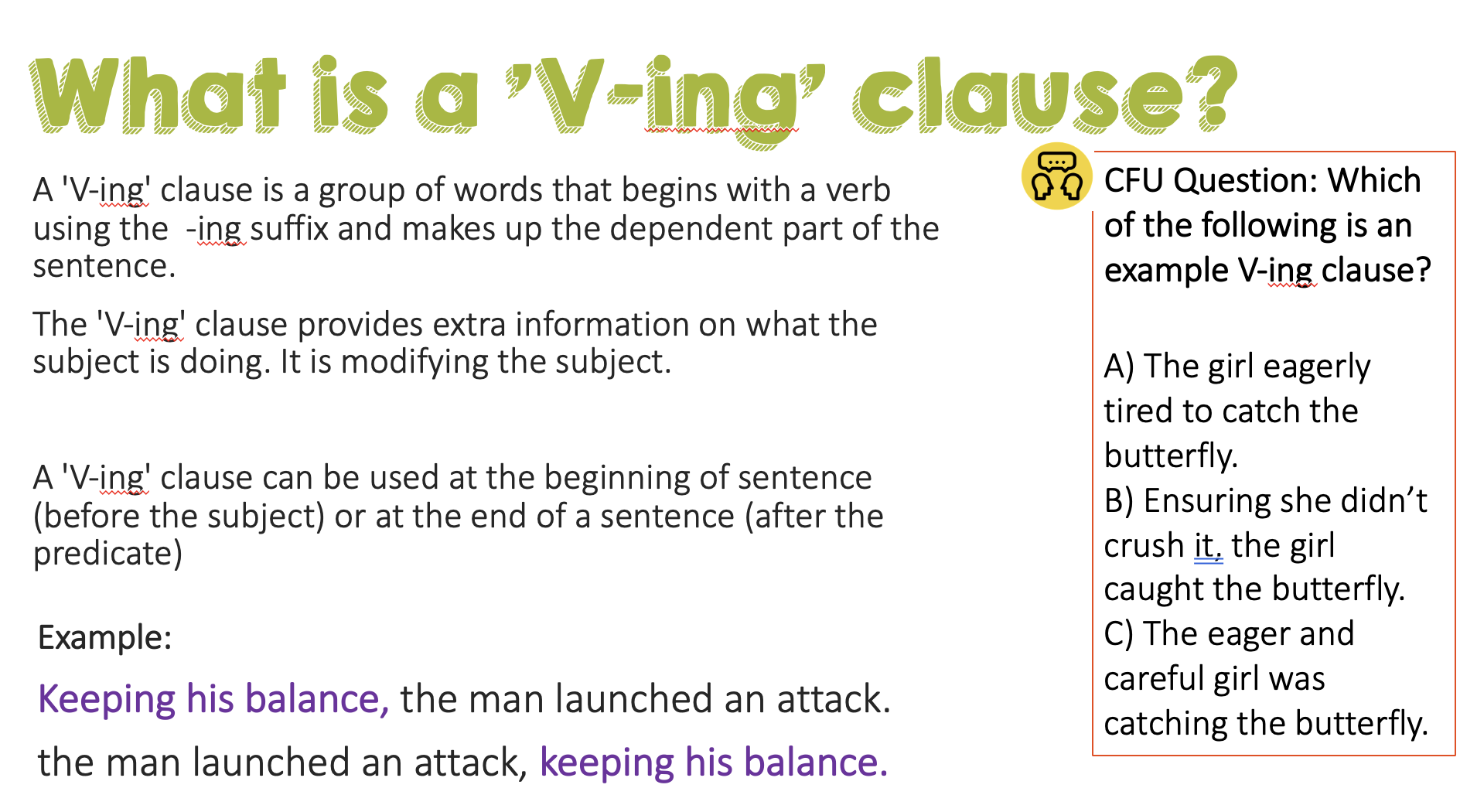
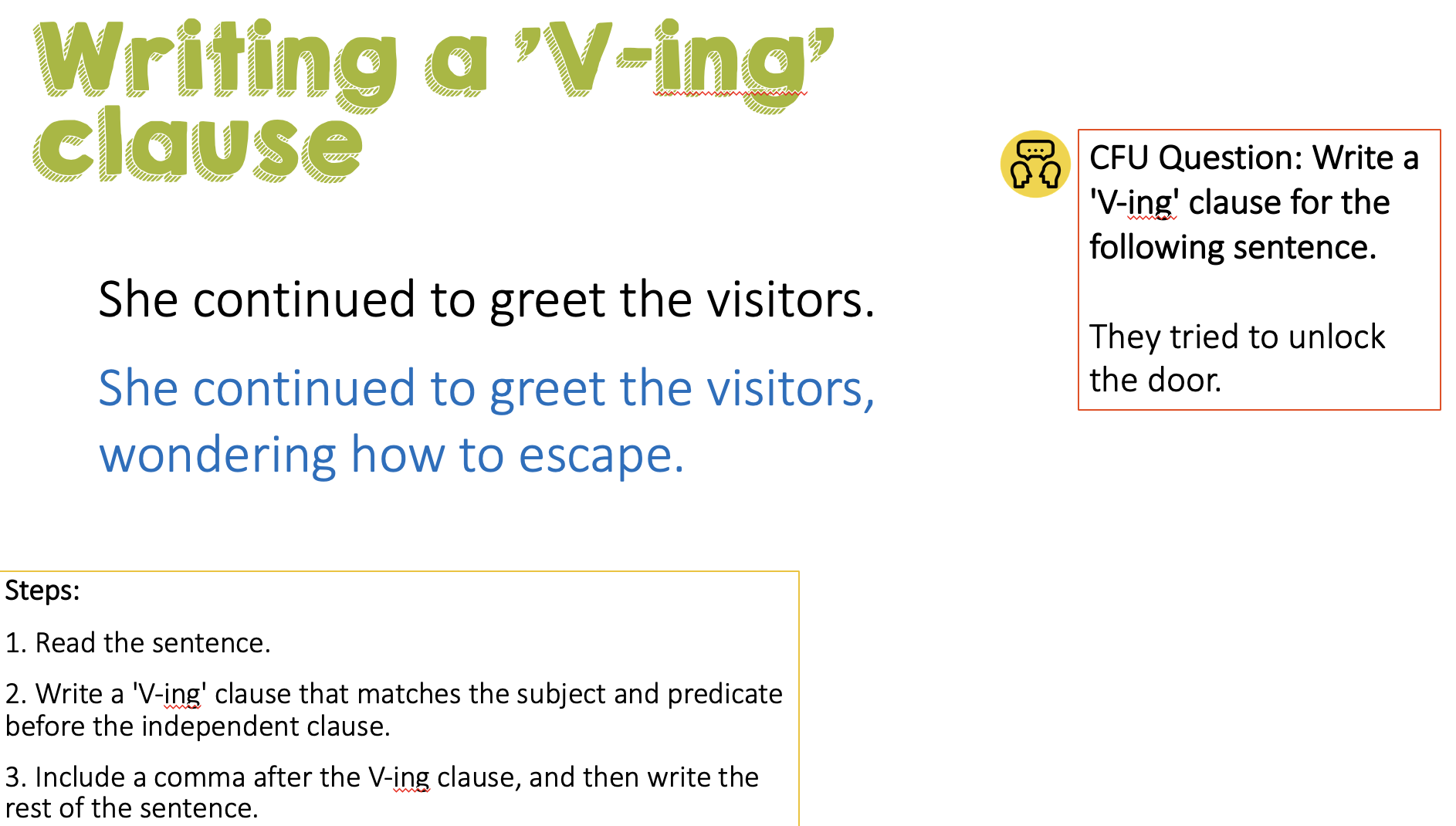
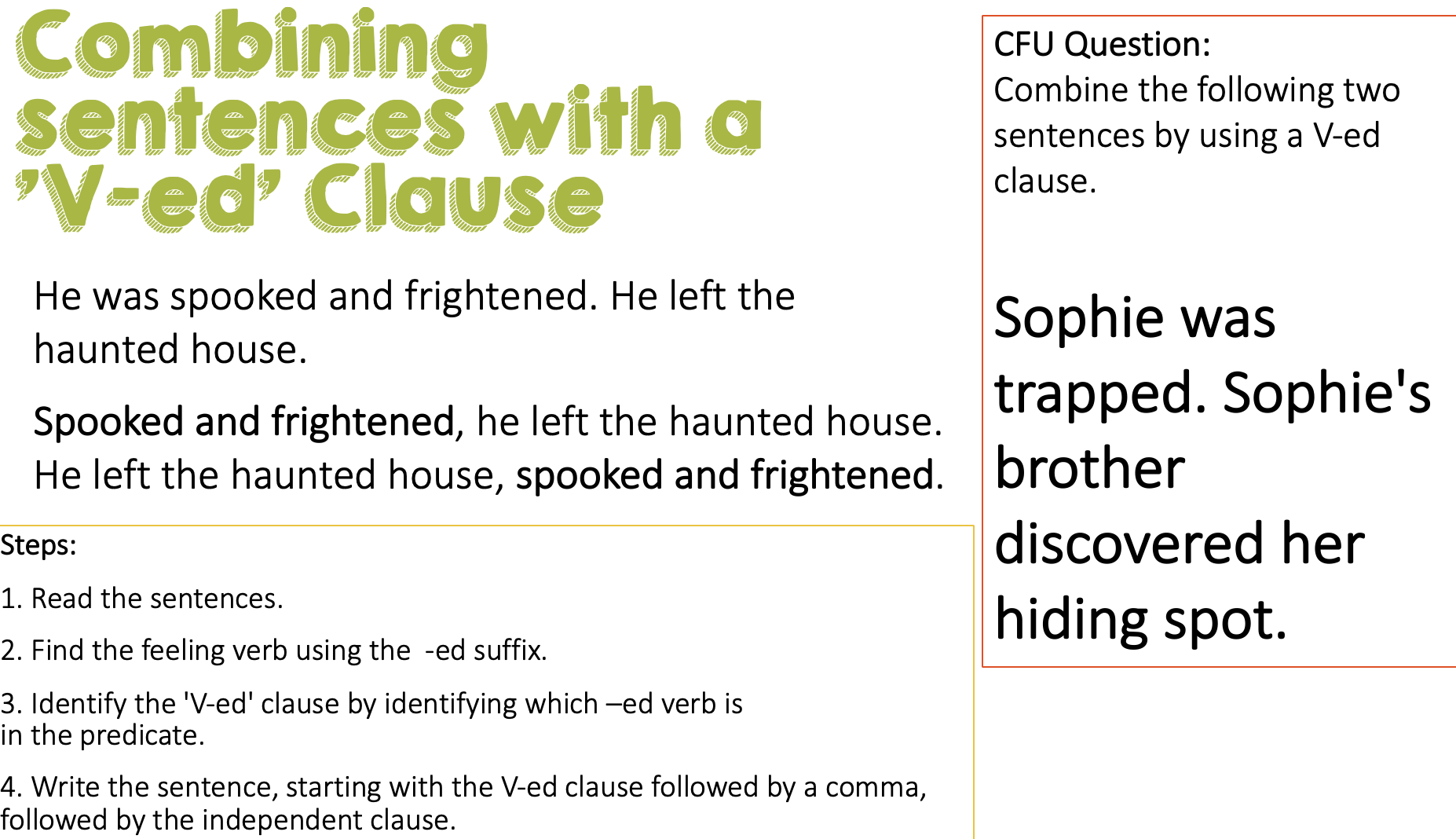

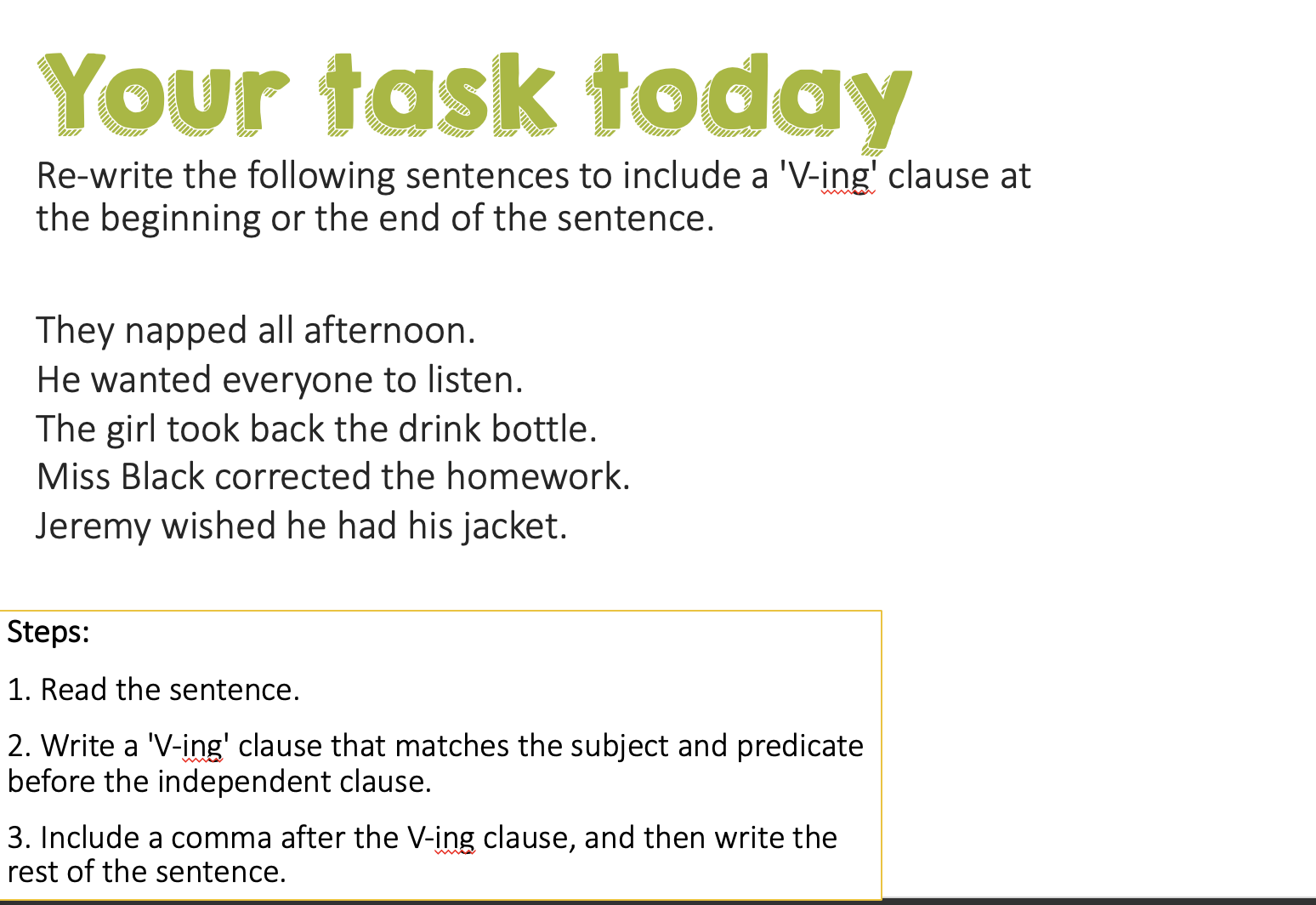
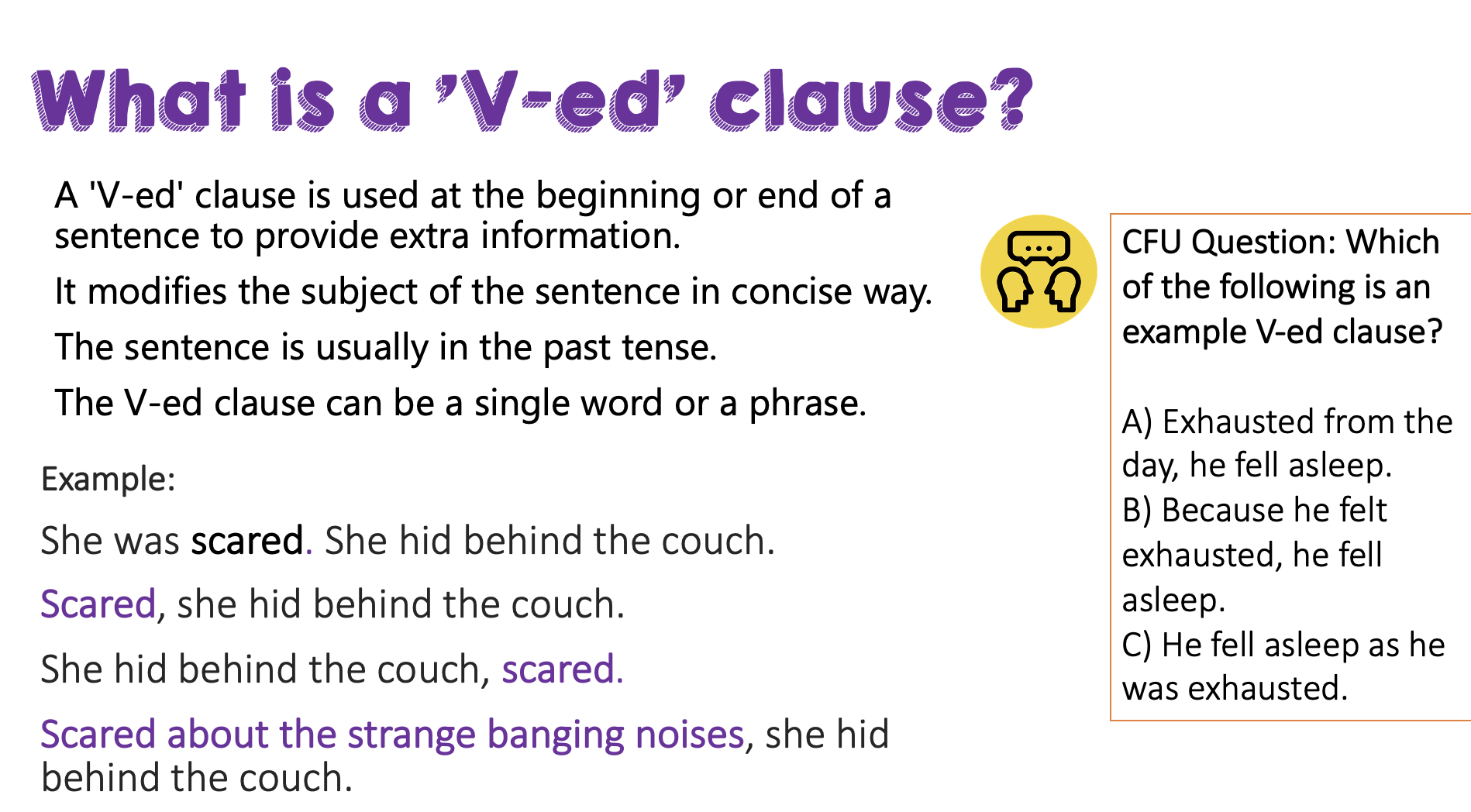
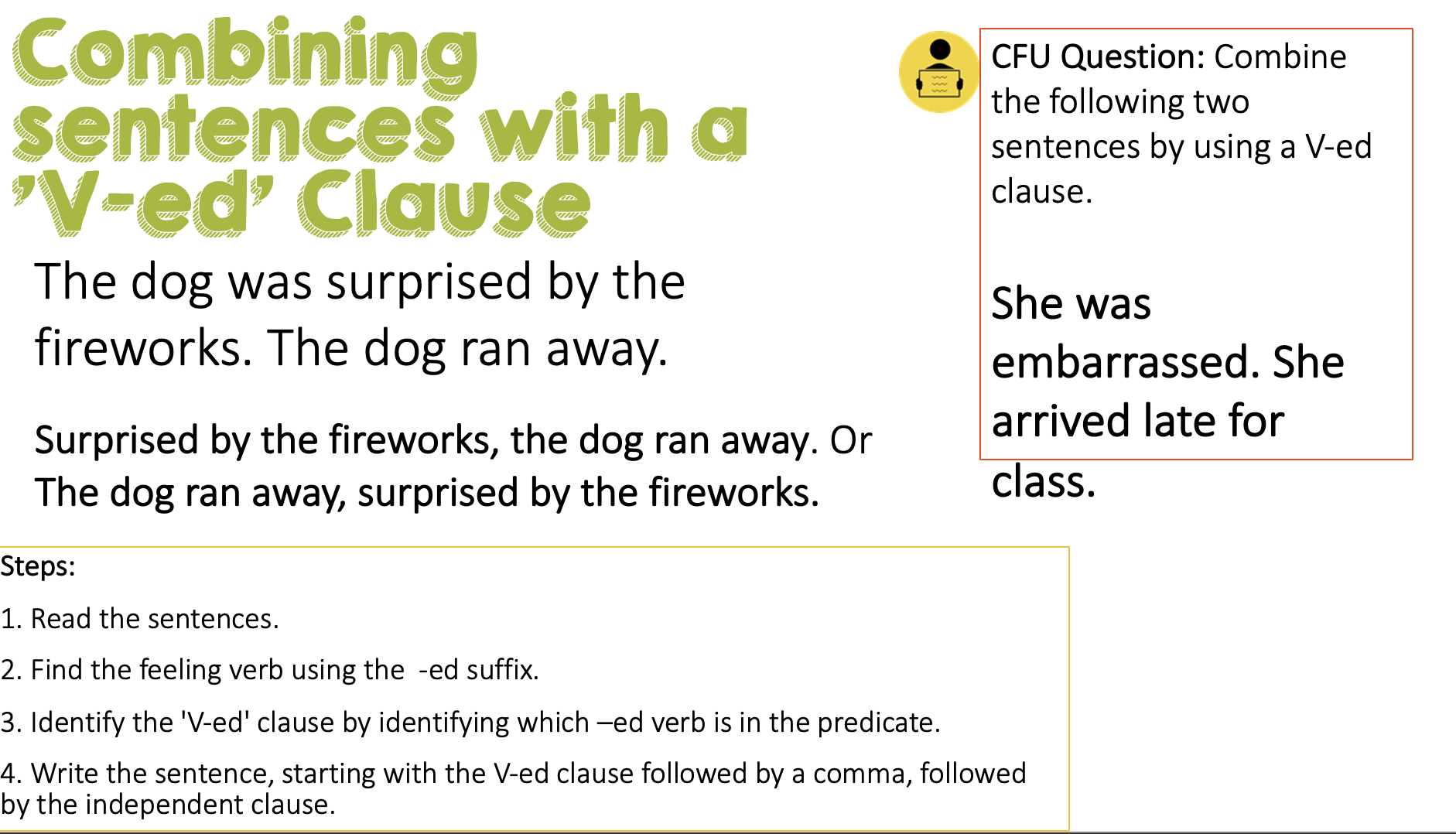
V-ing and V-ed RESOURCES IN SUBSCRIBER DOWNLOADS
Y4 Sessions 1, 2 - 'V-ing' Clause SLIDES
Y4 Session 3, 4 - 'V-ed' Clause SLIDES
Y5 Session 1, 2 - 'V-ing' Clause SLIDES
Y5 Session 3, 4 - 'V-ed' Clause SLIDES
Y5 V-ing and V-ed Clauses IND. TASK
Y5 Writing Learning Task - V-ing and V-ed Clauses
Narrative through Story Grammar
There has been lots of talk recently about how to teach narrative. We have developed this series of units on Story Grammar and have adapted it across Year 2 - 6 with a new unit for Year 1 to come very soon. Previously our school has used programs that have led to many inanely onomatopoeic openings to our students’ stories (e.g. Bang! buzzzz).
We have been having a lot of fun and success with teaching students the key elements of a story which comes from the research into how stories are understood and retold by children across childhood. Story grammar uses Western conceptions of stories which are linear and contain a clear set of characters, setting, problem, reaction, plan, attempt to solve problem, consequence, and resolution. One of the key tricks we have discovered is to model planning a story with the problem in mind first. Students can think of what the main problem in the story might be and then retrofit a suitable character to attempt to solve the problem. In typical chronological planning, students can get very attached to an elaborate description of their character, but then the meatiest part of the story can be left wanting or the situation they find their characters in do not fit the initial exposition. How many stories have you read which tend not to go anywhere or have dissatisfying endings?
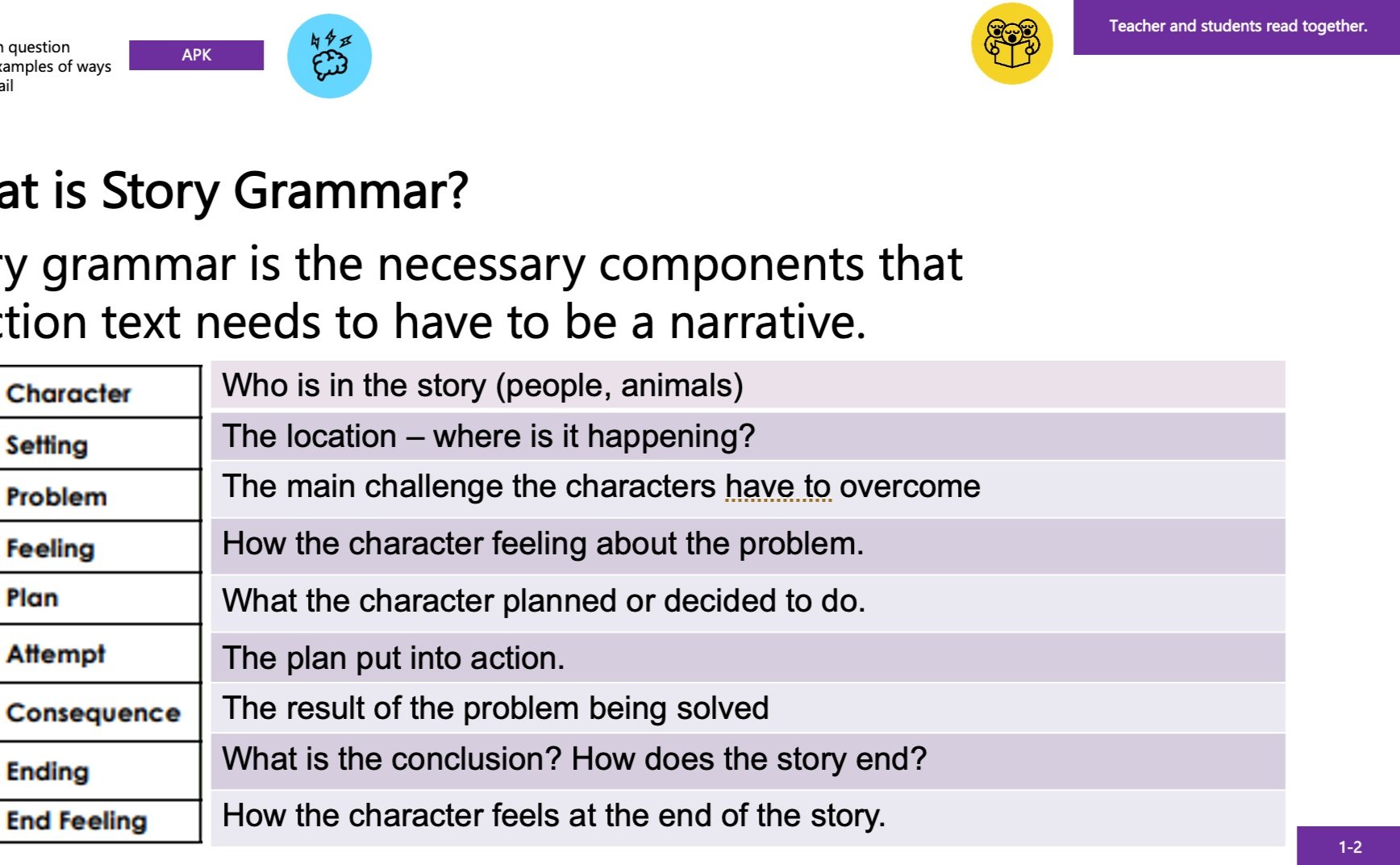

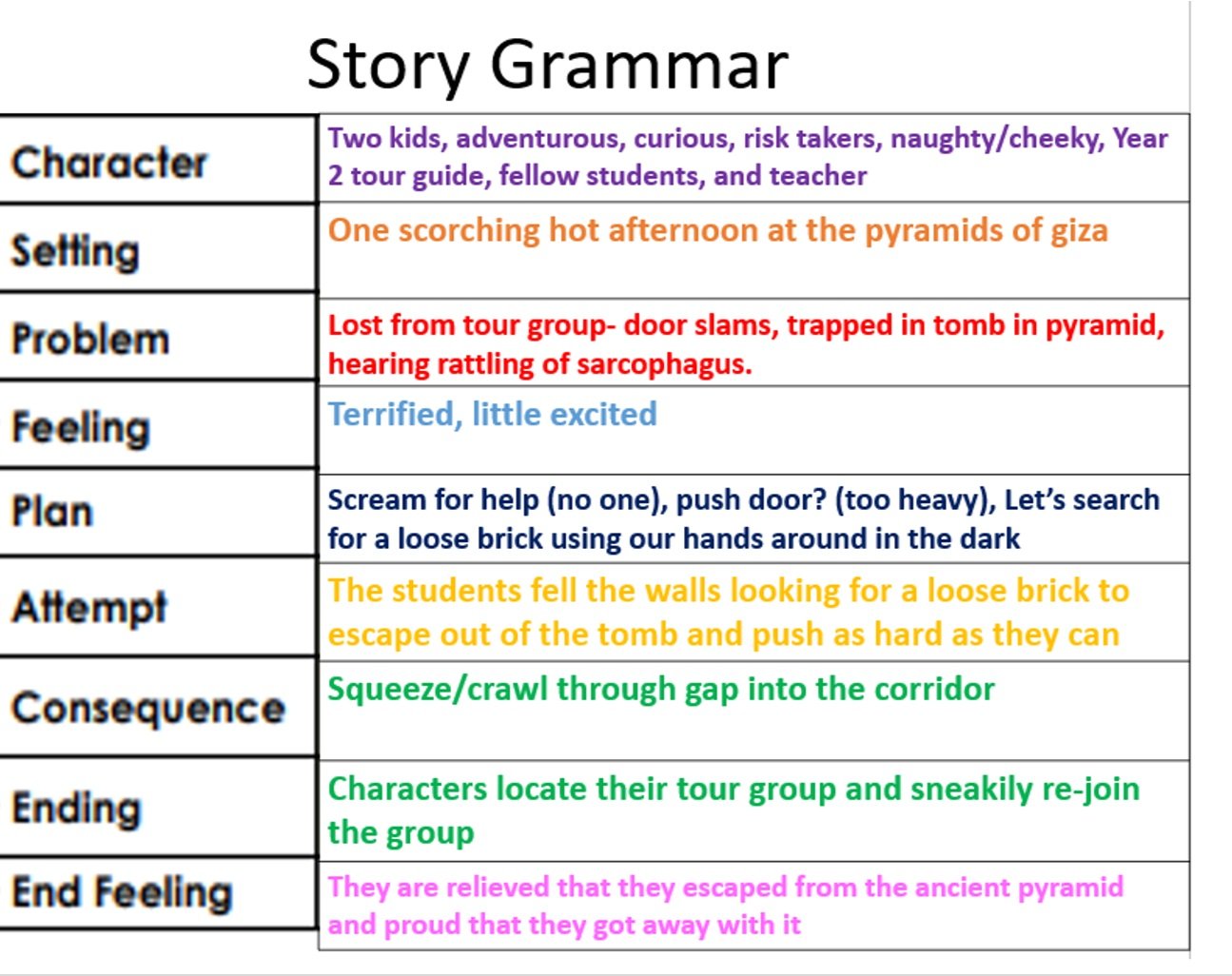

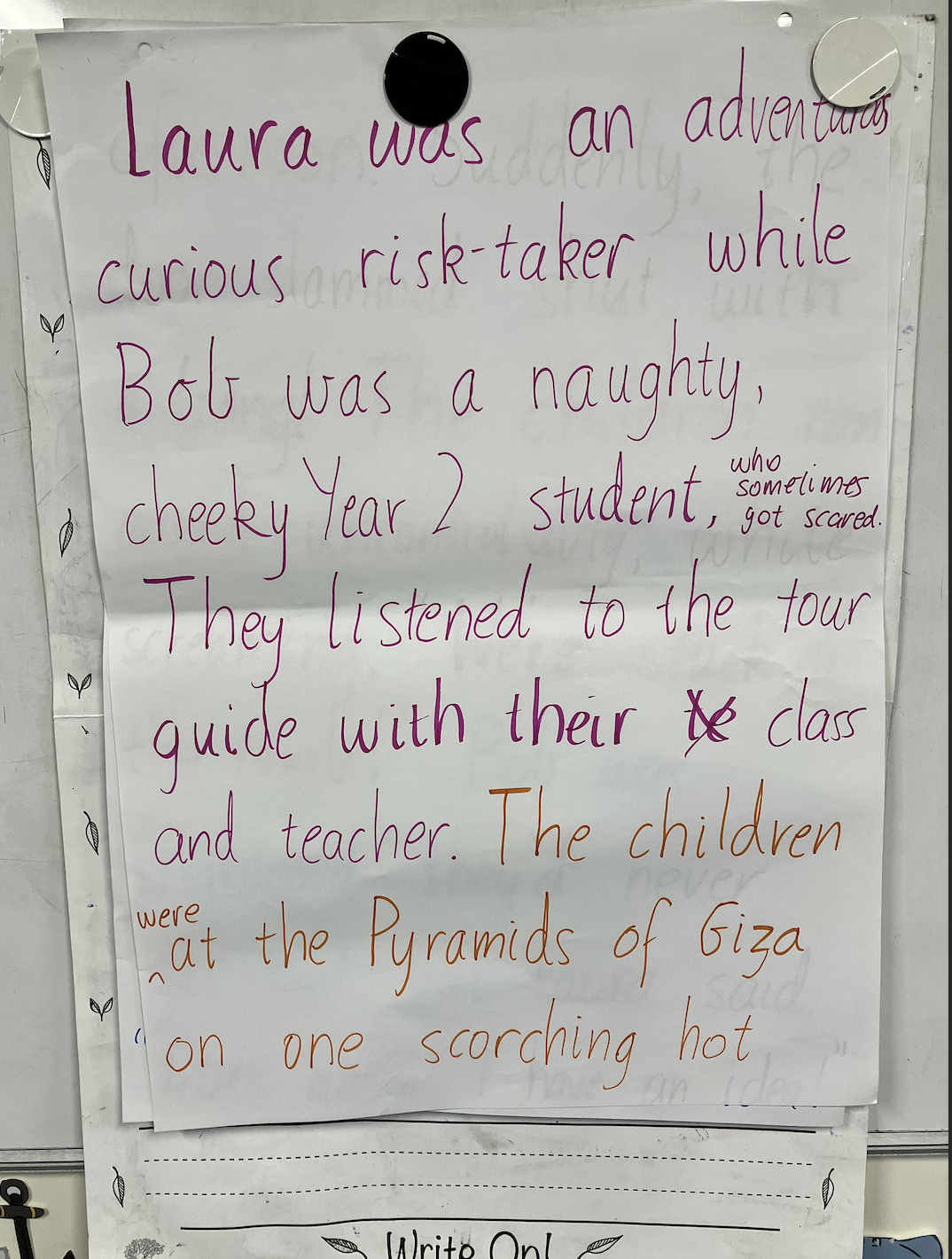
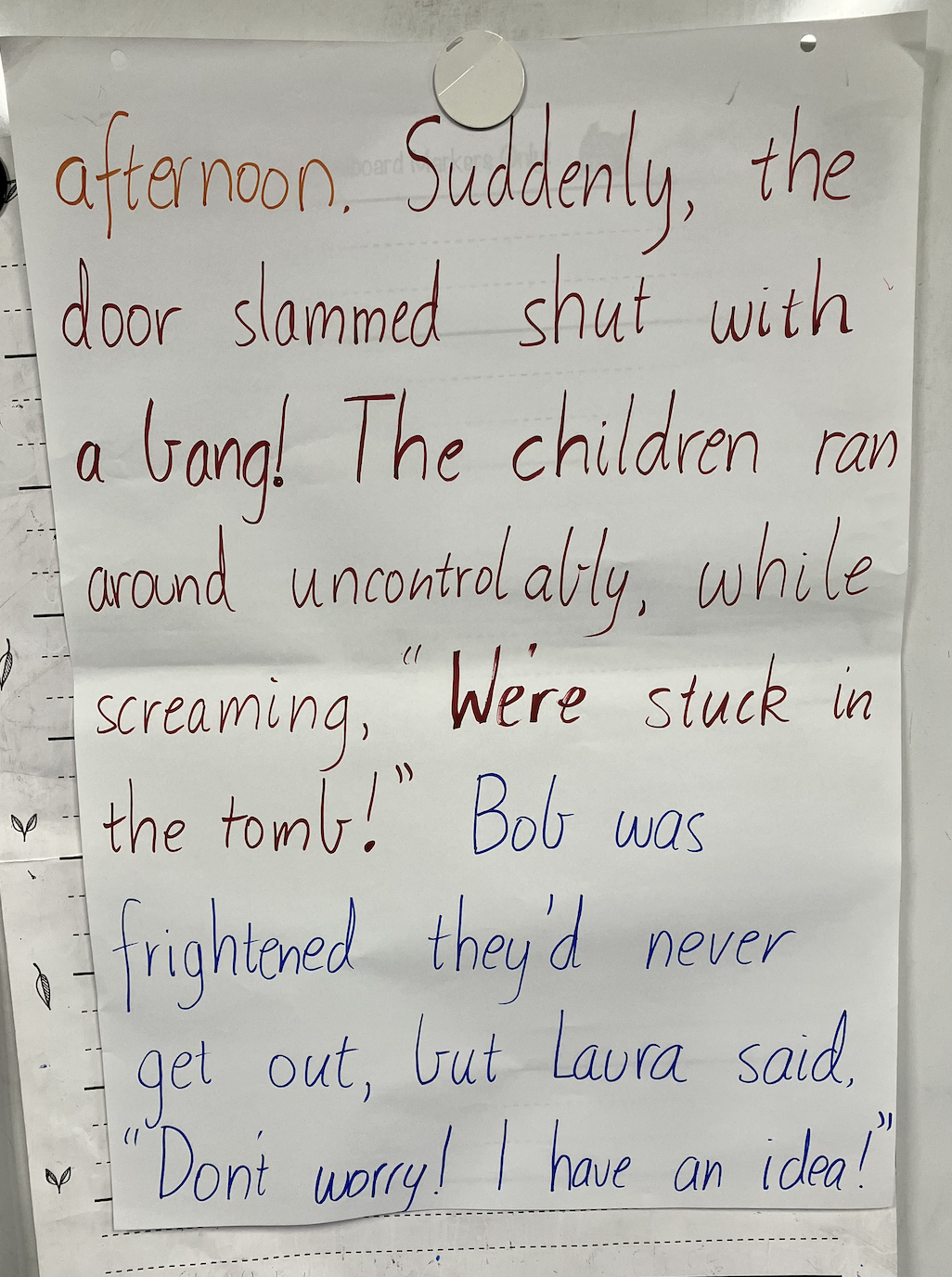
Narrative through Story Grammar RESOURCES IN SUBSCRIBER DOWNLOADS
Y2 Narrative Story Grammar Unit SLIDES
Y2 Story Grammar template to print
Y3 Story Grammar Unit SLIDES
Y4 Story Grammar Unit SLIDES
I hope these sets of lessons provide an alternative way of planning and then writing narratives whilst allowing your students to use the sentence-level TWR strategies to bring the language of their stories to life.
Thanks for visiting!
ABOUT me
Dr Nathaniel Swain
I am a Teacher, Instructional Coach, Researcher and Writer. I am passionate about language, literacy and learning, and effective and engaging teaching for all students.
I have taught a range of students in school settings and now work at La Trobe University’s School of Education and the SOLAR Lab.


